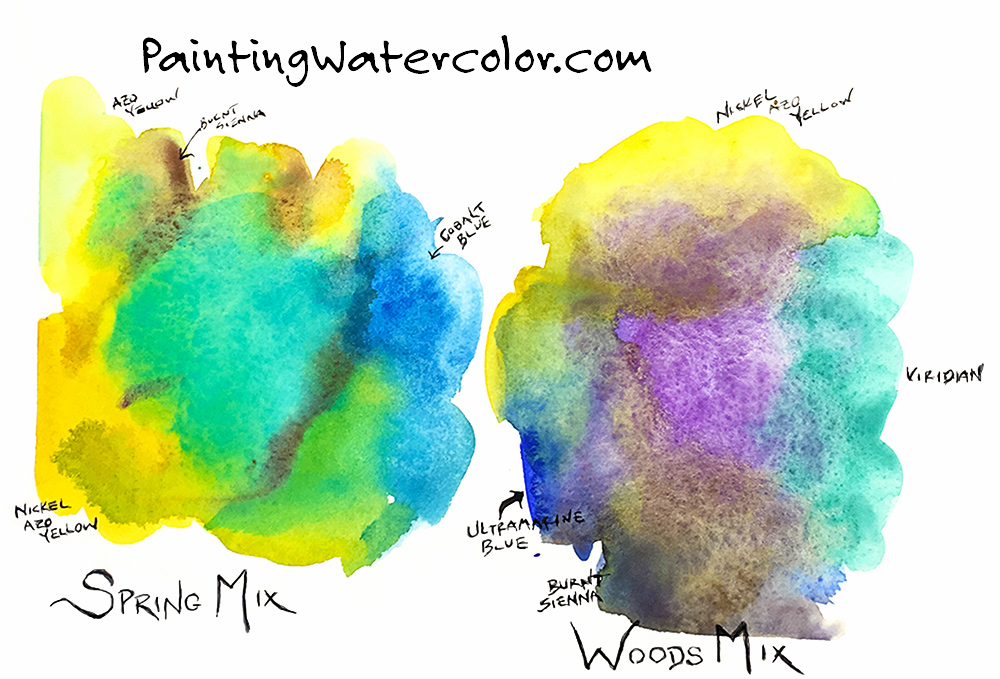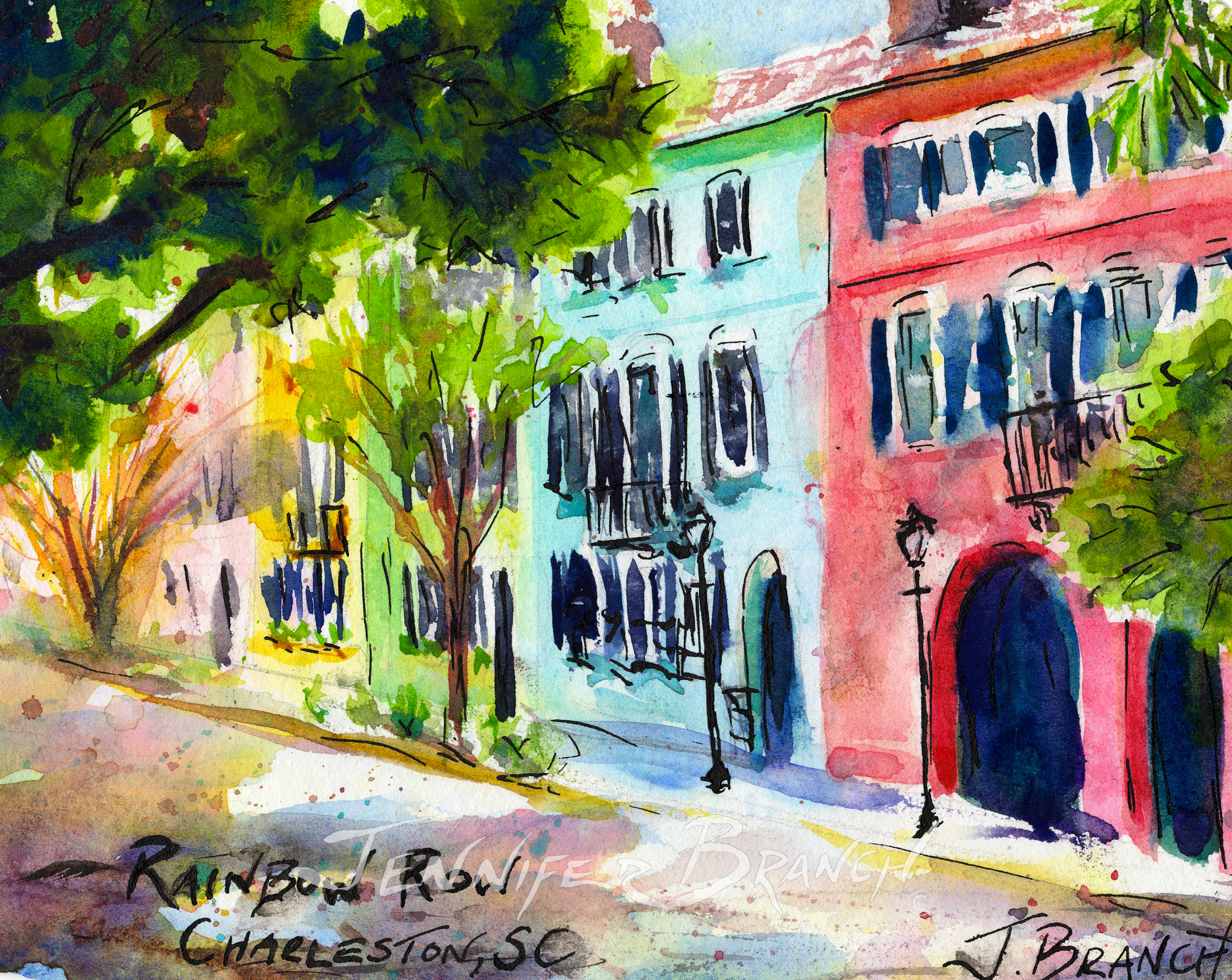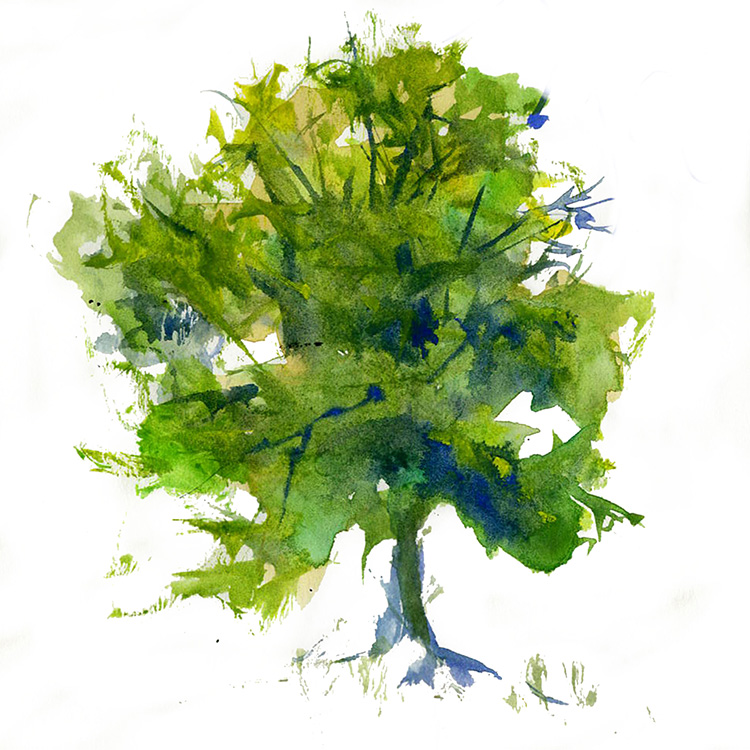Painting Demonstration 1

This cute little bird sketch takes less than 20 minutes and only needs 3 paints, Cobalt Blue, Ultramarine Blue and Quinacridone Rust!
Here's the finished spread with the 2 tufted titmice!
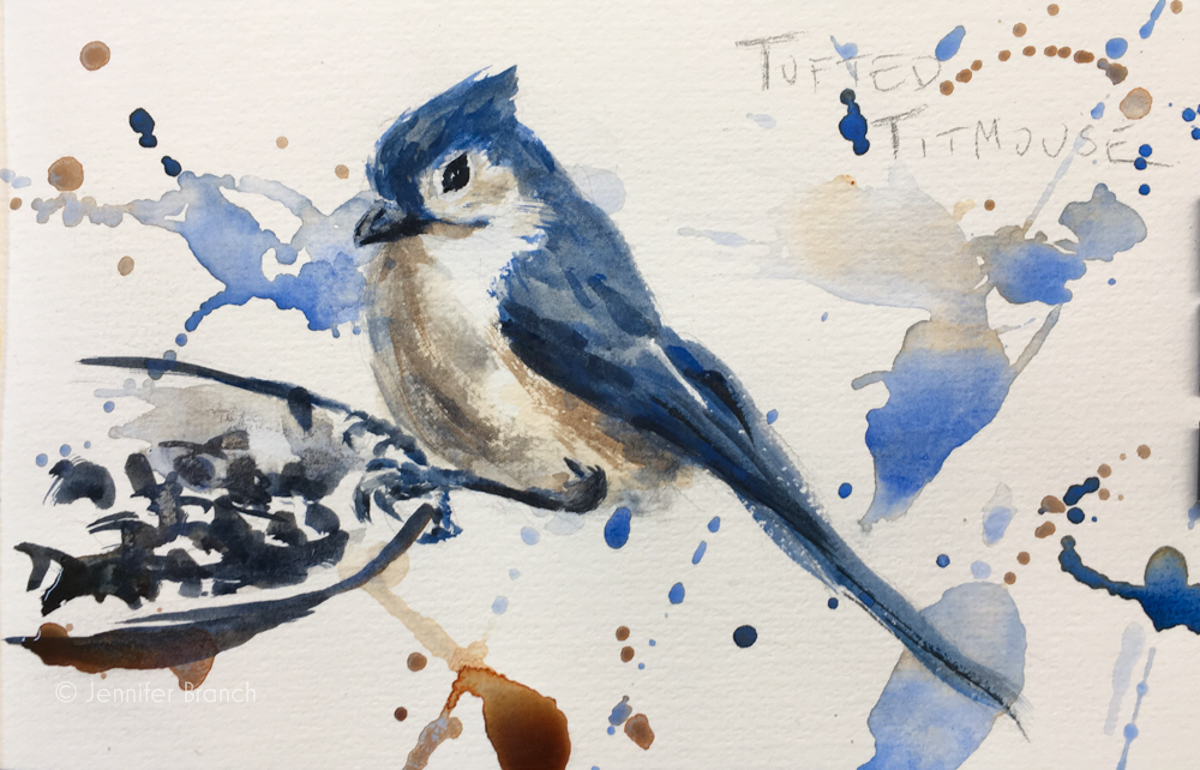
Disclaimer: Jennifer Branch Gallery is a participant in the Amazon Services LLC Associates Program, an affiliate advertising program designed to provide a means for sites to earn advertising fees by advertising and linking to amazon.com. I receive a small rebate for your entire order (starting at 4%) if you choose to purchase through Amazon. Most items can be bought multiple places and I highly recommend local art stores if you have one! Any other recommendation links I receive no compensation for.
These referrals help me support this website, and I thank you for any purchase you make through them. I will never recommend a product I have not used frequently and believe is the best tool for the purpose!
Painting Demonstration 2
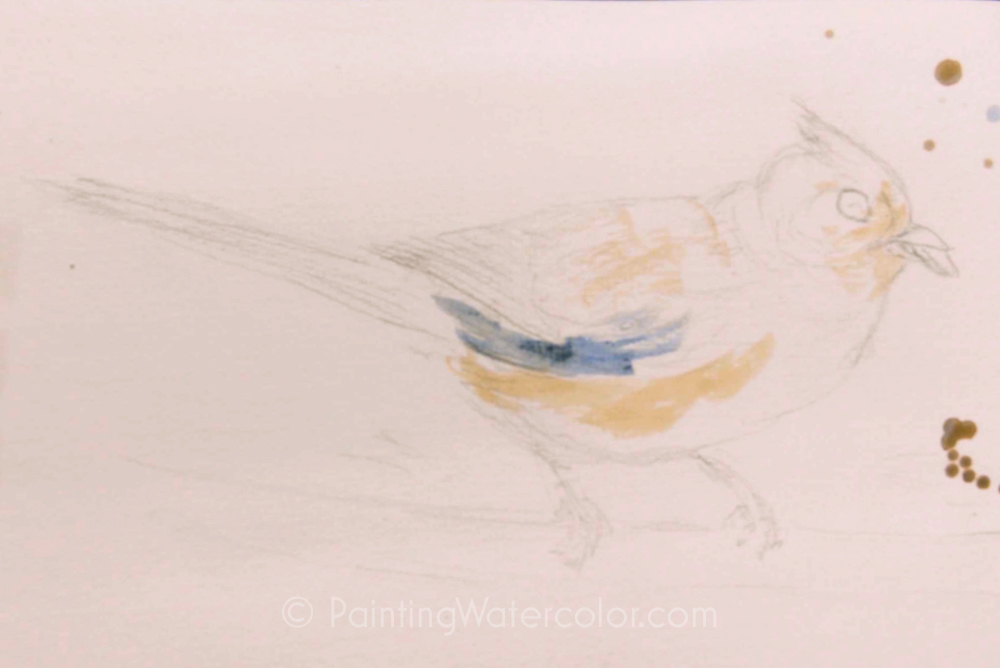
First, I loosely paint the shadow areas on the bird. I want a warm under layer of Quinacridone Rust under a lot of the feathers. The blue gray color is Cobalt Blue + Quinacridone Rust. The variations are simply changing the mix ratio up.
Painting Demonstration 3
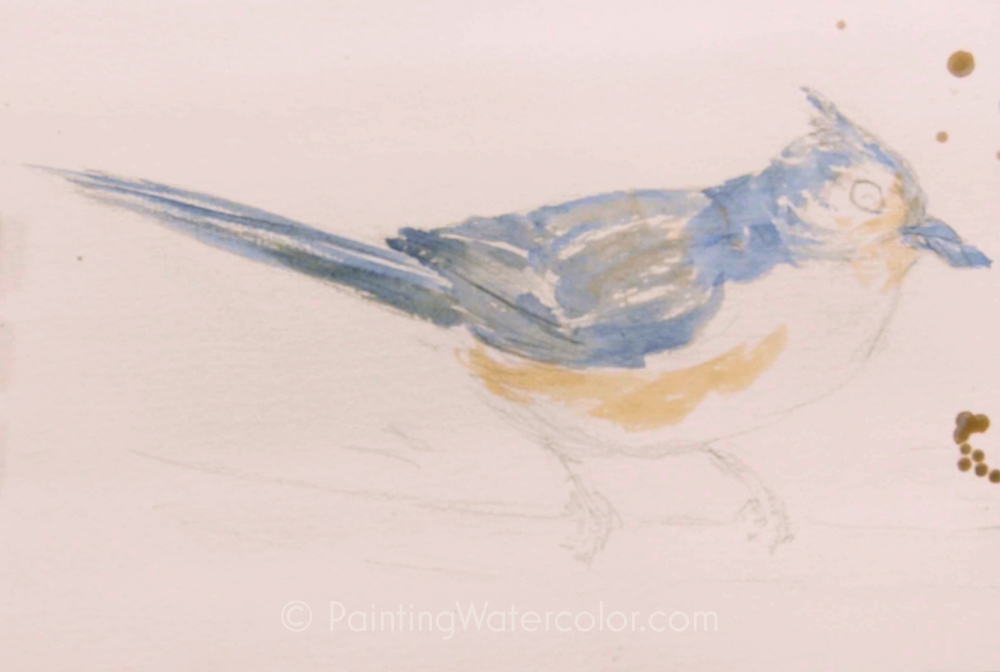
I continue with the loose underpainting of the bird. I leave a lot of whites for the reflections on the feathers. This also helps keep the sketch loose.
Artist Tips
For feathery texture, build up in at least 3 layers.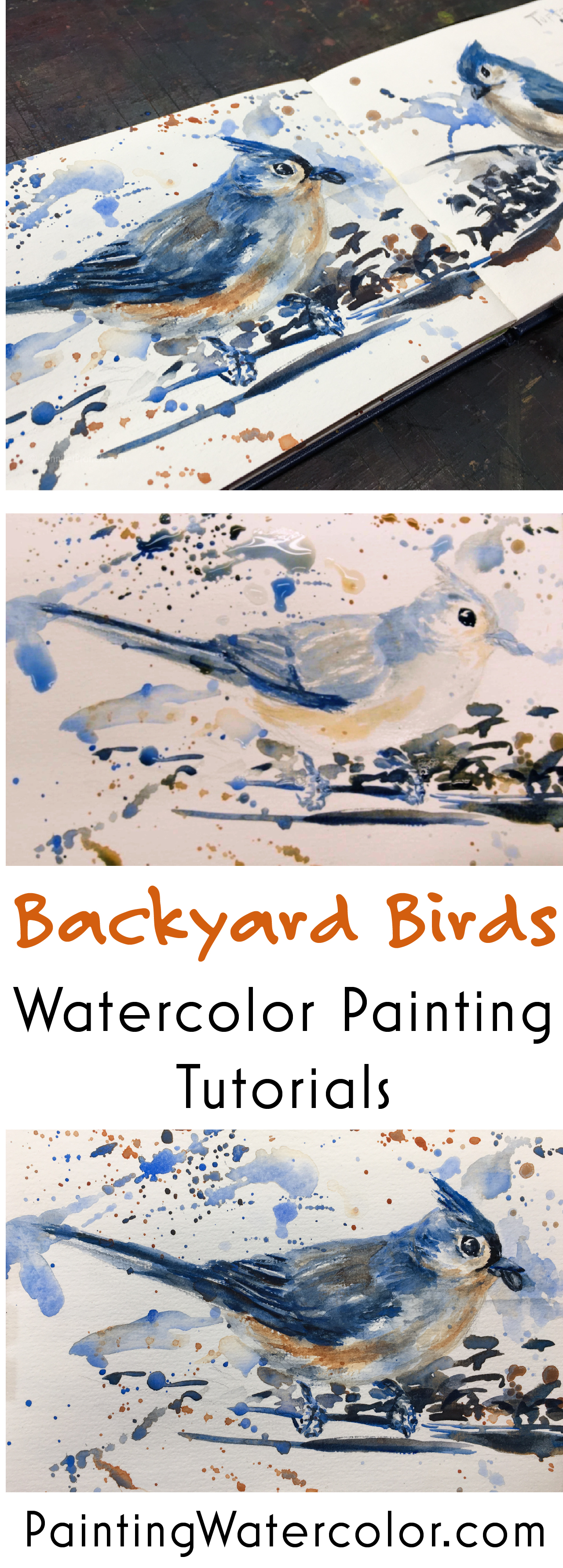
Painting Demonstration 4
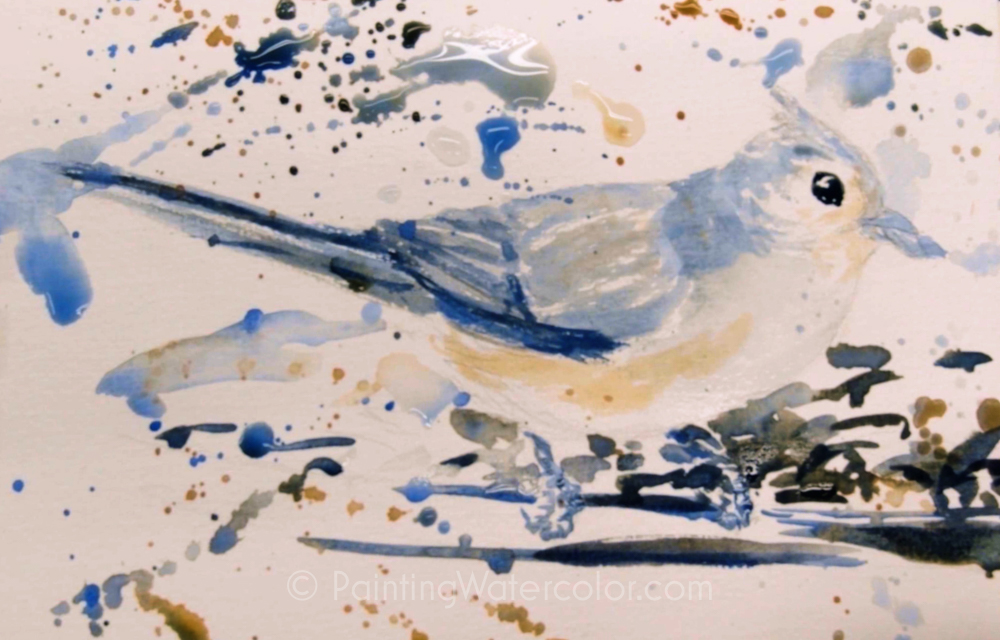
Now it's time to really loosen things up! I splatter paint Cobalt Blue and Quinacridone Rust in the background. I let the splattered colors flow together. I don't mix them on the palette.
The sunflower seeds are painted in mostly Ultramarine Blue and Quinacridone Rust. A slightly deeper blue makes them a lot darker, in contrast to the chalky Cobalt Blue.
The eye is also painted in Quin Rust and Ultramarine Blue. I leave the white of the paper for sparkle in the eye.
Painting Demonstration 5

Another few layers of fluffy feathers here. Pay attention to the edges, since that's how you recognize objects. A few feathery fringes at the edge of the head makes a big difference!
For a finishing touch, I did a tiny highlight on the beak and seed with white gouache.
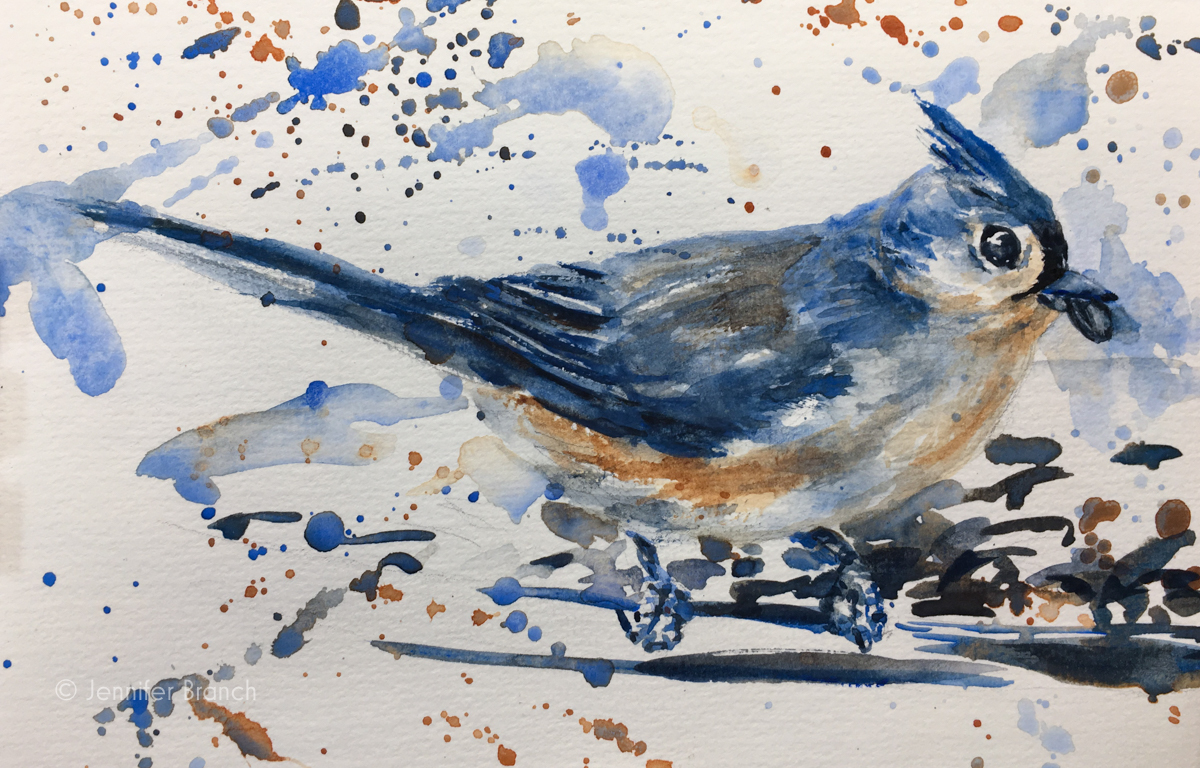
Final Watercolor Sketch!
I used an extremely limited palette of 3 pigments, just as the opposite side of the journal spread. Obviously, I could have skipped the Ultramarine Blue as well and done the entire painting with Cobalt Blue only. However, I never restrict my pigments, unless I'm on location and run out of paint!
However, I do limit my pigments to only what I'm going to repeat throughout the painting. If you repeat the same colors all around the painting (or sketch) then it pulls the painting together. For journal continuity, it's nice to use the same palette on both sides of the spread, even if they aren't the same subject.
Your journal will flow together if you use a small palette. My 12 pigment palette is about right for most subjects!
In a subject oriented sketch, like a bird, I rarely paint the background, unless I'm trying to work out how to paint the background. But without the background, it usually looks incomplete unless you add something. Splatter is a fun and easy solution!
II'll continue sketching backyard birds throughout the year. There are always new and colorful birds at my feeder. Right now, I have my eye on a woodpecker with a bright red head!
I hope this inspires you to sit by your bird feeder and sketch your backyard birds.

Related Art Lessons




